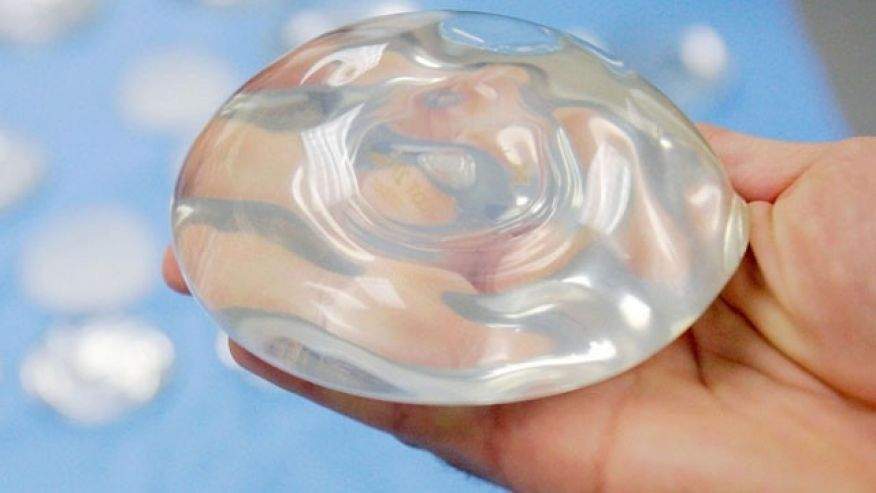Dow Corning Corp. has agreed to pay $3.2 billion to settle claims of about 170,000 women who say their silicone breast implants made them sick.
If the proposed settlement is approved, individual women could receive from $12,000 to $60,000 apiece. In addition, the company would pay $5,000 to women demanding surgery to remove their implants, and $25,000 to compensate women whose implants had ruptured.
The proposal could mark a major turning point in a legal and scientific battle that has dragged on for more than six years — and which, for many of the women and families claiming damage, has been all but stalled since Dow Corning filed for bankruptcy protection in May 1995 because of an onslaught of implant litigation.
“Obviously, a lot of the details have to be worked out, but I’d look at it as a breakthrough in an incredibly complex case,” said Dow Corning spokesman Michael Jackson.
The outlines of the agreement were ratified in a closed meeting Tuesday by the Midland, Mich.-based company and those suing it in a Michigan bankruptcy court, and tentatively approved yesterday by Judge Arthur Spector, who is presiding over Dow Corning’s case.
The five-page package of terms includes the amount to be paid and the beginnings of a timetable, as well as the creation of separate funds to compensate people who have suffered from implant rupture and those who claim broader medical problems stemming from the presence of silicone in their bodies. It provides for more money and a faster payout of claims than under previous Dow Corning settlement proposals.
The agreement also preserves the right of women to reject the settlement and pursue their lawsuits individually.
“This is a big deal,” said Rick Laminack, a Houston lawyer who represents implant recipients. “It puts momentum in the process.”
Laminack and his partner, John O’Quinn, nonetheless voted against the plan, saying that it was still too vague. “The devil is in the details,” Laminack said. Elements of the final plan that cannot be agreed upon will be worked out by Spector.
Laminack said the plan is a promising start for emerging from the litigation morass that has stalled all efforts against the company since it filed for bankruptcy protection.
“It’s certainly the foundation, and maybe the frame and part of the roof,” Laminack said. “It looks like a house. You can tell it’s a house.” Spector imposed a gag order on participants in the talks until the proposal is fleshed out and formally introduced as part of the bankruptcy settlement in August. Details of the settlement, however, were revealed in the Wall Street Journal and confirmed by sources involved in the litigation who asked that they not be identified.
Once the plan is included in the bankruptcy settlement, a final proposal could be mailed later this year for a vote by women with Dow Corning implants. The plan must be approved by the women and by the company’s commercial creditors.
Women suing the industry claim a lengthy list of complications from the breast-enlarging devices, including complications from surgery, implant rupture and long-term diseases of the immune system such as rheumatoid arthritis and lupus, which cause pain, fatigue and other symptoms. Dow Corning has acknowledged that rupture and surgical complications can occur, but has fought the notion that silicone itself causes disease.
That question has bedeviled scientists, lawyers, implant recipients and manufacturers for years. The Food and Drug Administration imposed a moratorium on the use of silicone breast implants in 1992, stating that the companies had never offered sufficient evidence that the products are safe.
Thousands of women sued Dow Corning and other implant makers, and the major companies reached a $4.25 billion settlement proposal in 1994. Dow Corning, a company formed by Dow Chemical Co. and Corning Inc., sought bankruptcy protection in May 1995 after that settlement failed to attract enough claimants to satisfy the company. Dow Corning, as the largest manufacturer of implants, would have paid $2 billion of that fund. (The company no longer makes implants.)
Since then, a series of studies has contributed to a growing scientific consensus that no strong link between silicone and systemic diseases exists. None of the studies, however, has ruled out a weaker link to those ailments or atypical conditions that could affect thousands of women out of the estimated million who have received implants.
After its bankruptcy filing, Dow Corning brought forth proposals to settle the bankruptcy that took a hard line with implant recipients, at one stage severely limiting the ability of women claiming systemic illness to sue. A plan filed last year would set aside $2.4 billion to settle outstanding claims.
As the bankruptcy case dragged on without resolution, however, the company “came to the conclusion that there’s a time in a controversy when both sides have to agree to disagree to find common ground,” said Jackson of Dow Corning. The new proposal is about $200 million higher than the company’s previous offer.
Francis McGovern, a Duke University law professor appointed by Spector to try to mediate an agreement, had been preparing the settlement proposal for weeks. He presented the “take-it-or-leave-it” offer to participants in talks last week and set a July 7 deadline for the parties to decide.
“We were quite fortunate that both parties agreed to accept that common approach to the resolution of the dispute,” McGovern said.
One implant recipient, Peggy Musmeci of Metarie, La., said that the suggested $31,000 average settlement by Dow Corning is “not much money at all, for what people have been through. . . . $31,000 could not pay for all medical expenses that I’ve been through in 13 years.” “It’s ludicrous what these manufacturers have done to us,” Musmeci said. “They just want to get rid of us, any kind of way at all, period.”
